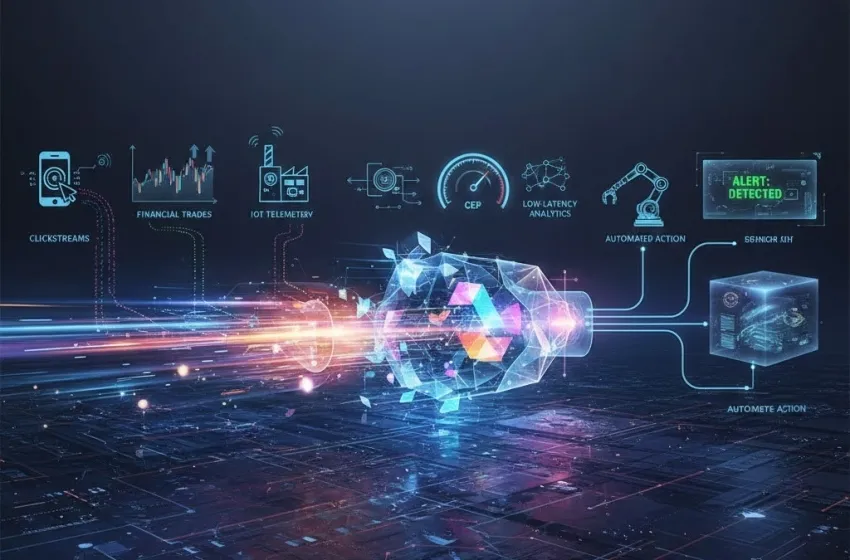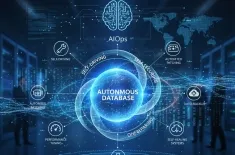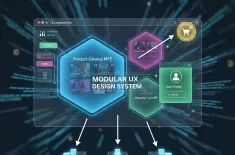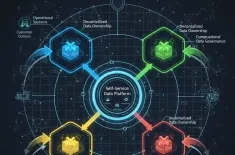Learn about Apache Kafka, event processing, CEP, and low-latency analytics.
Real-time data streaming and processing represent a fundamental shift in how organizations manage, analyze, and derive value from information. In an increasingly data-driven world, the ability to act on data immediately upon its creation—often within milliseconds—is no longer a luxury but a critical necessity for maintaining competitive advantage, optimizing operations, and delivering superior customer experiences.
This paradigm moves away from traditional batch processing, where data is collected, stored, and then processed periodically (hourly, daily, or weekly), to a continuous, flow-based model. The goal is to achieve low-latency analytics, transforming raw, high-volume data into actionable insights with near-instantaneous speed. This is particularly crucial in sectors like financial markets, where a millisecond delay can mean missed opportunities, and in the Internet of Things (IoT), where timely responses to sensor data can prevent system failures or enable automated control.
The Imperative of Real-Time Processing
The core driver behind the demand for real-time capabilities is the increasing volume and velocity of data generated by modern applications and devices. Today's systems produce continuous streams of information:
- Clickstreams from websites and mobile apps.
- Financial market trades and quotes.
- Sensor telemetry from industrial machines and IoT devices.
- Log files from servers and microservices.
- Social media feeds and sentiment data.
Processing this continuous flow requires a dedicated and robust architectural approach. The time-to-insight is the paramount metric. For fraud detection in financial transactions, for example, the value of the insight diminishes rapidly with every passing second; a near-instantaneous alert is effective, while an alert delivered hours later is useless.
Understanding the Core Components
A modern real-time data streaming architecture is typically composed of several interconnected layers designed to handle the continuous lifecycle of data, from source to destination.
Data Sources and Producers
This layer comprises the myriad of applications, devices, sensors, and databases that continuously generate data. The data, often referred to as "events," must be structured and sent to the ingestion layer efficiently.
Stream Ingestion and Storage
This is the conduit that reliably and durably captures and transports the event streams. It acts as a buffer, decoupling the data producers from the data consumers, which is essential for fault tolerance and scaling.
Apache Kafka is the undisputed leader in this space, having become the de facto standard for event streaming platforms. Kafka is a distributed, partitioned, and replicated commit log service. Its key capabilities make it central to Real-time data streaming:
- High Throughput: It can handle millions of events per second.
- Scalability: It can scale horizontally across a cluster of machines.
- Durability: Data is stored safely and replicated across multiple brokers, ensuring no data loss.
- Decoupling: Producers and consumers interact via topics, allowing them to evolve independently.
Kafka's role transcends simple messaging; it serves as a persistent, fault-tolerant backbone that allows data to be processed multiple times by different consumers, supporting both real-time streams and batch processes. This process is the heart of data ingestion.
Stream Processing
Once ingested, data moves to the processing layer, where transformation, enrichment, filtering, and analysis occur in motion. This is where the raw events are turned into meaningful data and insights. Stream processing frameworks like Apache Flink, Kafka Streams, and Apache Spark Streaming are used here to handle operations such as:
- Filtering: Removing irrelevant data points (e.g., keeping only temperature readings above a certain threshold).
- Transformation and Enrichment: Changing the data format or augmenting events with static reference data (e.g., adding a customer's demographic details to a click event).
- Aggregation and Windowing: Calculating metrics over a period of time, such as the total number of transactions in the last 60 seconds.
This layer is the engine for event processing, applying business logic and algorithms to the data as it flows.
Complex Event Processing (CEP)
Complex event processing (CEP) is a crucial, advanced subset of stream processing. It involves analyzing and correlating multiple events—often from disparate sources and over a period of time—to identify meaningful, high-level patterns or "complex events" that signify opportunities or threats.
CEP engines use techniques like event pattern detection, abstraction, and modeling of causal relationships to infer a higher-level situation from a sequence of lower-level events.
Example Use Case for CEP:
- In financial markets, a series of small, unusual buy orders across three different stocks within a 3-second window might be a complex event signaling algorithmic market manipulation. No single event is suspicious, but the combination and timing are.
- In IoT, a drop in oil pressure (Event A) followed by a sharp increase in engine temperature (Event B) and a decrease in RPM (Event C) within 5 seconds constitutes a "Potential Engine Failure" complex event, triggering an immediate shutdown or maintenance alert.
CEP is the mechanism that allows real-time architectures to move beyond simple data transformation to sophisticated, pattern-based automated decision-making.
Destination and Consumption
The final stage delivers the processed data to downstream systems. Destinations can include:
- Real-time dashboards (for operational monitoring).
- Databases (for transactional updates).
- Data warehouses or data lakes (for historical analysis and training Machine Learning models).
- Event-driven applications (that automatically trigger an action, like sending an alert or placing a trade).
Designing Architectures to Handle Huge Volumes
Designing architectures to handle and process huge volumes of data immediately upon creation requires careful consideration of scalability, throughput, and latency. The core principle is horizontal scaling and distributed computing.
Decoupling and Backpressure Management
The architecture must be decoupled, with each component (ingestion, processing, storage) capable of operating and scaling independently. Kafka's role as a buffer is vital here. It handles data ingestion and manages backpressure—situations where producers generate data faster than consumers can process it. Kafka stores the stream persistently, preventing data loss and allowing consumers to catch up without overwhelming them. The ability to partition topics in Kafka and distribute those partitions across a cluster allows for massive horizontal scaling of throughput.
Stateless vs. Stateful Processing
High-volume processing often benefits from stateless processing (simple filtering or transformation) done by serverless functions or lightweight services. However, achieving low-latency analytics and CEP requires stateful processing—the ability to remember past events to make sense of the current one (e.g., calculating a running average or detecting a sequence of events). Frameworks like Apache Flink are designed for this, offering powerful state management features that are fault-tolerant and scale with the data volume.
Latency Optimization Techniques
Minimizing end-to-end latency is paramount for true real-time performance. Optimization strategies include:
- Smaller Batch Sizes: Even "streaming" frameworks sometimes process data in small micro-batches. Minimizing these batch sizes reduces latency.
- In-Memory Processing: Utilizing in-memory computation for stream processing to avoid disk I/O bottlenecks.
- Network Tuning: Optimizing network communication and minimizing network hops between producers, brokers, and consumers.
- Tuning Apache Kafka: Adjusting broker configurations (e.g., replication lag, log flush intervals) to prioritize speed over maximum throughput where necessary.
Real-Time Analytics and ML Integration
The architecture must natively support the continuous feeding of data to analytical tools and machine learning (ML) models. This involves:
- Feature Engineering in the Stream: Calculating real-time features (e.g., "average transaction amount in the last 5 minutes") directly within the stream processing layer.
- Real-Time Model Scoring: Deploying trained ML models as part of the stream processing pipeline to score incoming events instantly (e.g., for fraud or anomaly detection). This is fundamental to achieving proactive, automated decision-making, which is particularly crucial for financial markets and IoT applications.
Conclusion: The Future is Instantaneous
The transition from batch to stream processing is a defining characteristic of modern data infrastructure. Real-time data streaming, powered by robust platforms like Apache Kafka and intelligent event processing techniques, is driving immediate value across industries. From executing high-frequency trades in financial markets to enabling predictive maintenance in IoT applications, the ability to perform low-latency analytics and sophisticated analysis through complex event processing (CEP) is unlocking new levels of automation and decision-making. The future of data is not just about having more data; it's about making the most of it in the moment it is created.



































